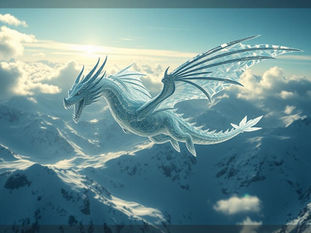
Create Better Images with Midjourney: Simple Prompting Tips
May 17
4 min read
0
5
0

Do you want to create stunning images with Midjourney? Writing the right prompt makes all the difference. Midjourney is a powerful tool, but knowing how to talk to it helps you get the exact results you want. This guide shares simple ways to build effective prompts and improve your AI art journey.
Whether you are just starting or looking to get more specific images, understanding prompt structure is key. Let's look at the basics and some easy steps to get you started.
Understanding the Core Midjourney Prompt
A Midjourney prompt tells the AI what to create. Think of it as giving instructions to an artist. The simplest prompt can be just a few words, like "a cat sitting on a fence". But to get a more specific or unique image, you need to add more detail.
Good prompts usually include:
The subject (what do you want? e.g., "a majestic lion")
The action (what is it doing? e.g., "roaring")
The style or medium (how should it look? e.g., "digital painting," "watercolor," "photorealistic")
Setting or background (where is it? e.g., "in a dense jungle")
Putting it together: "a majestic lion roaring in a dense jungle, digital painting". This gives Midjourney a much clearer idea of what you envision.
Using Parameters to Refine Your Images
Parameters are like extra switches you flip to control specific aspects of the image. You add them at the end of your prompt. They start with two hyphens (`--`).
--aspect (or --ar): Sets the aspect ratio of the image (e.g., --ar 16:9 for widescreen, --ar 1:1 for square).
--v: Chooses the Midjourney version to use (e.g., --v 6). Newer versions usually offer more detail and control.
--style: Can fine-tune the style, especially for newer versions (e.g., --style raw).
--niji: Uses a special model trained to create anime-style images.
--stop: Stops the job partway through the process (e.g., --stop 50). This gives you an unfinished, often painterly look.
You can combine parameters: "a majestic lion roaring in a dense jungle, digital painting --ar 16:9 --v 6". Play around with these to see how they change your results.
Managing many prompts and parameters can get tricky. If you are generating lots of images, consider using a tool to keep things organized. The Midjourney Automation Suite from TitanXT can help you manage prompt variations and speed up your workflow.
Tips for Getting Specific Styles
Want your image to look like it was painted by a famous artist? Or maybe a specific lighting style? Add these details to your prompt.
Mention artists: "in the style of Van Gogh", "inspired by Monet".
Mention art movements: "surrealist painting", "art deco style".
Describe lighting: "cinematic lighting", "golden hour light", "neon glow".
Use photography terms: "macro shot", "wide-angle lens", "bokeh background".
Describe materials: "made of glass", "wooden texture", "liquid metal".
Be descriptive! Instead of just "beautiful forest", try "enchanted forest with glowing mushrooms and misty light". More detail often leads to results closer to what you imagine.
Troubleshooting and Iteration
Sometimes your first prompt won't give you exactly what you want. That is normal! Try these steps:
Add or remove words: Make your prompt more specific or simplify it.
Change word order:
Adjust parameters: Try a different aspect ratio or version.
Use negative prompting (--no): Tell Midjourney things you do NOT want in the image (e.g., --no cars).
Think of it as a conversation. You try a prompt, see the result, and refine your next instruction based on what you see. This back-and-forth helps you learn what works best for your vision.
For those creating many variations or needing consistent elements, managing this process manually takes time. The Midjourney Automation Suite from TitanXT is designed to make this easier, handling repetitive tasks so you can focus on the creative part.
Creating Consistent Character or Design
Getting the same character or specific design element across multiple images can be a challenge. While Midjourney doesn't have a built-in character specific model yet, there are techniques people use:
Use descriptive language: Keep the description of your character very consistent across prompts.
Use seed numbers (--seed): The seed number helps recreate similar initial noise fields, which can lead to more consistent outputs from the exact same prompt.
Use image prompts: Start your prompt with an image URL that shows the character or design you want to replicate.
Consistency often requires trial and error and careful prompt wording. Keeping track of successful prompts, parameters, and seeds is important.
Conclusion: Practice Makes Perfect
Mastering Midjourney prompting is a journey. Start with simple prompts and gradually add complexity. Experiment with different styles and parameters. The more you practice, the better you will become at translating your ideas into images.
Remember, Midjourney is a tool to help bring your creativity to life. Have fun exploring the possibilities!
If you find yourself doing repetitive tasks or need a better way to manage your Midjourney creations, check out the Midjourney Automation Suite by TitanXT. It can streamline your workflow and enhance your image generation process.






